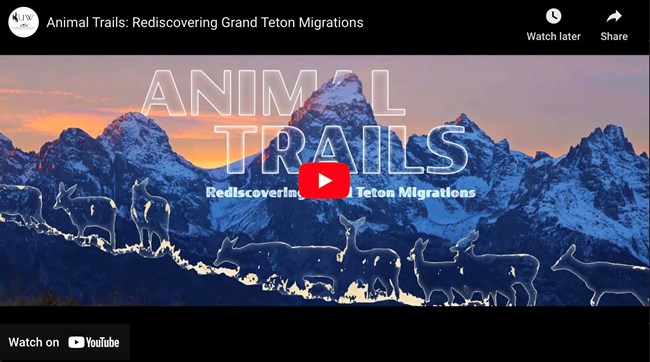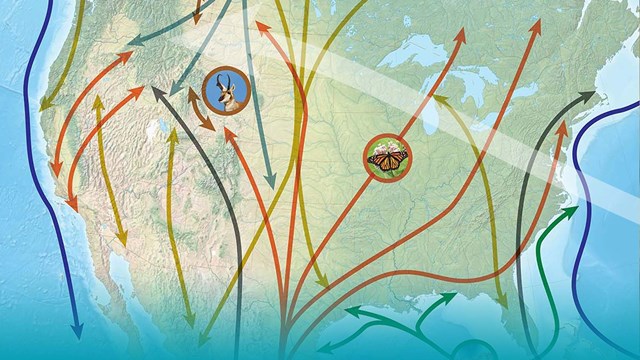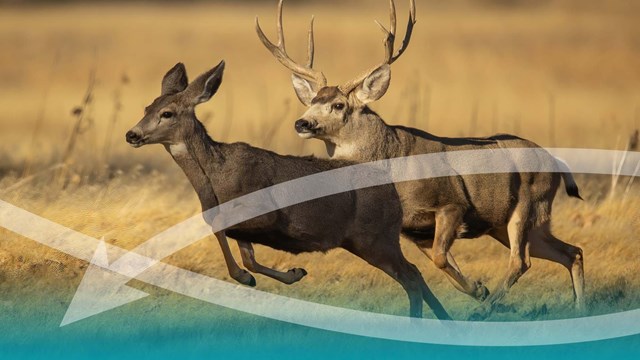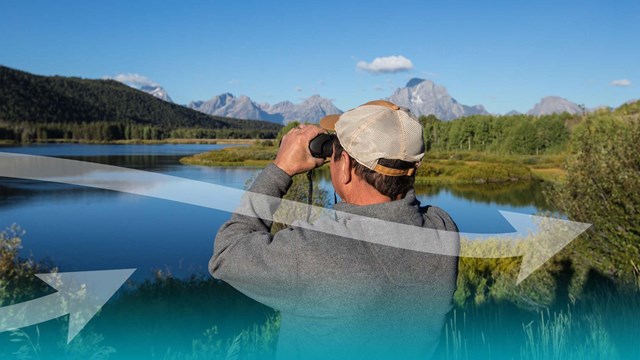
NPS Illustration 
Wyoming Migration Initiative Grand Teton National Park is a magical place renowned for its scenery and abundant migratory wildlife, but many of the animals that call the park home only live here for part of the year. Recent GPS tracking of migratory mule deer and other wildlife revealed that animal trails radiate out in all directions from Jackson Hole to the far reaches of the Greater Yellowstone Ecosystem. For generations, these migrations have sustained not only mule deer, elk, and pronghorn herds, but also the Indigenous peoples who occupied these lands, in some cases for thousands of years. Together, history and science have affirmed the importance of these seasonal journeys made by wild herds, inspiring people to work together to conserve the incredible migrations of the greater Grand Teton area.

NPS Illustration
Intact EcosystemThe broad landscape Grand Teton National Park is at the heart of the Greater Yellowstone Ecosystem that spans 22 million acres and is the most intact temperate ecosystem worldwide. It covers parts of Wyoming, Montana, and Idaho, incorporating three national park sites, six national forests, three national wildlife refuges, Bureau of Land Management holdings, tribal lands, state lands, and private lands. During the summer, diverse wildlife thrives in the higher elevations of Grand Teton and Yellowstone due to the abundance of food. However, when winter arrives, heavy snowfall and freezing temperatures prompt animals to migrate to lower elevations or warmer climates. Ungulates like elk, mule deer, and pronghorn are prominent migratory species, often traveling in large herds or gathering together during summer and winter. This ecosystem also serves as a summer home or stopover for many bird species during their annual north-south migrations. For instance, ospreys migrate from Cuba to this area for the summer, while common loons journey from the west coast of the United States to breed here. Rough-legged hawks are unique migrants as they winter in this ecosystem before heading to their summer nesting grounds in the Arctic Circle. As our understanding of migration grows, so have the challenges faced by migrating wildlife. Habitat loss and fragmentation in various parts of the U.S. have led to the disappearance of species. Land development, infrastructure, fencing, and roads can all disrupt wildlife migrations. The relatively intact nature of the Greater Yellowstone Ecosytem provides a significant advantage for wildlife conservation and maintaining migratory corridors. Greater TogetherProtecting migration routes necessitates cooperation among diverse stakeholders due to the mix of public and private lands within the ecosystem. Federal protections and state designations, like Wyoming’s Red Desert-to-Hoback mule deer migration corridor, are crucial. Constructing overpasses and underpasses in high-use areas helps prevent wildlife-vehicle collisions. Collaborating with private landowners to implement wildlife-friendly fencing and conservation easements is essential in maintaining connected corridors. By working together, we can preserve and support migration within the Greater Yellowstone Ecosystem. Migration and PeopleIndigenous people call this place home as they have for thousands of years. Knowledge of these lands, passed down through oral histories, stories, and experience often led to seasonal migrations of people through this area. Generations of Indigenous people know and follow the many migratory routes of pronghorn or mule deer. In fact, many of the roads visitors travel to reach the park began as Indigenous routes across this land. This traditional knowledge provides an important connection to movement across the landscape and is key to understanding migration in the Greater Yellowstone Ecosystem. 
What is Migration?
Find out how and why animals migrate (and why others don't). 
On the Move: Mule Deer Migrations
Traveling hundreds of miles over mountain passes and fording wide rivers mule deer migrate to survive. 
Migrations Need You
What can you do to help wildlife migrations? |
Last updated: August 21, 2025
